Disculpa, pero esta entrada está disponible sólo en English.
Todas las entradas de: reelchi
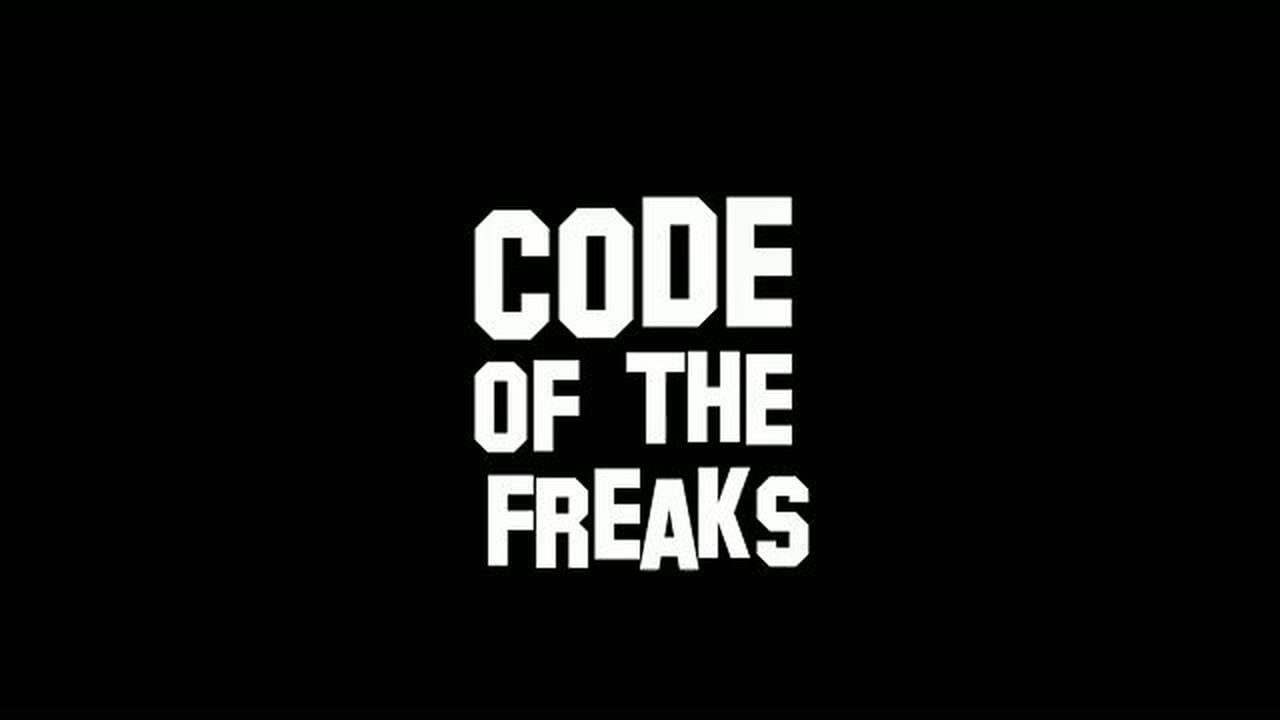
Fun Fact Friday presents: Chicago based filmmaker produces «Code Of The Freaks»
For over one hundred years, disabled characters have been ubiquitous in Hollywood movies. Characters in films such as The Hunchback of Notre Dame, A Christmas Carol, To Kill a Mockingbird, Of Mice and Men, What Ever Happened to Baby Jane, Charly, Born on the Fourth of July and Million Dollar Baby are demonized, sainted, infantilized and desexualized. As villains – Mr. Potter, Elijah in Unbreakable — they are embittered, thus driven to kill. As victims – Million Dollar Baby — they are not whole people and thus driven to suicide. As pariahs – Elephant Man — they are shunned. As paragons – Tiny Tim, Johnny Belinda — they suffer greatly and are therefore closer to God.
Using the notoriously misunderstood film Freaks as a frame, the WPA Collective, led by artists with disabilities, is in production on Code of the Freaks, the first documentary to critically examine Hollywood representations of characters with disabilities. Using examples from as far back as 1898 through the present, we interrogate how the disabled character is used through the decades, asking what this imagery means, who is served, how it shapes our ideas about disabled people and how representations of disabled characters have evolved.
Our Tour Guides for this exploration are our own rowdy and bitingly hilarious group of disabled activists, artists and critics. Our “cast” breaks it down, deflates, pokes fun and seriously analyzes metaphorical movie trends: Cure Me or Kill Me, Magical Creature, Monsters and Villains, Mentally Ill Maniacs and Blind Women Victims vs Blind Men Superheroes.
Susan Nussbaum, producer/writer
Carrie Sandahl, producer/writer
Aly Patsavas, producer/writer
Salome Chasnoff, director/writer
Jerzy Rose, director of photography
Meredith Zielke, sound
Related Article
Kartemquin has partnered with ReelAbilities: Chicago Film Festival to offer ReelLabs––an intimate feedback session for disability-oriented films in progress.
The feedback session takes place October 3rd, with July 31st as the submission deadline. Apply now!
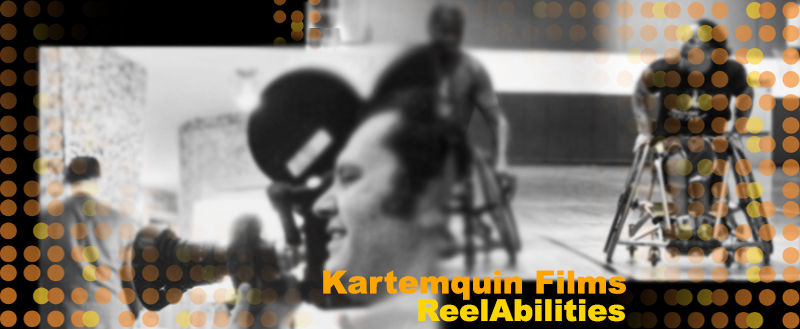
ReelAbilities Chicago and Kartemquin Films Partner Up for Fall Film Festival
Kartemquin has partnered with ReelAbilities: Chicago Film Festival to offer ReelLabs––an intimate feedback session for disability-oriented films in progress.
The feedback session takes place October 3rd, with July 31st as the submission deadline. Apply now!
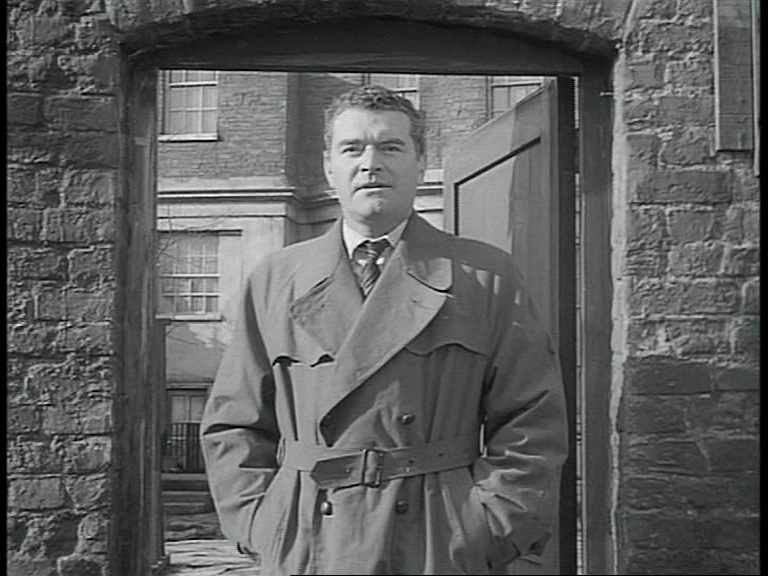
Fun Fact Friday presents: Jack Hawkins, Determined To Speak
This week’s Fun Fact:
Jack Hawkins was an English actor whose film career spanned from 1930 to 1973 (“Jack Hawkins”). Hawkins can be described as “slender, ruggedly handsome, and—to American audiences, at least—thoroughly British” (“Jack Hawkins, the Actor”). The height of his career came during the 1950s. Perhaps he is more widely known for his roles in The Bridge Over River Kwai, (1957) Ben-Hur, (1959) and Lawrence of Arabia (1962). One of the more interesting roles of his that I discovered is Mandy, (aka Crash of Silence) (1952) where he plays Dick Searle, the Headmaster of a residential deaf school in Manchester, England, teaching deaf children how to speak and lip read. This practice reflects a belief in “oralism” at the time, where “deaf people can and should communicate without the use of sign language, relying exclusively on lip reading and oral speech” (Nielsen 96). Interestingly, Hawkins “lost” his voice after his larynx was removed due to cancer in 1966. He continued to act in films though, using his own voice “by using his diaphragm and stomach muscles” for short lines and having his lines dubbed by other actors for the longer speaking parts (“Jack Hawkins, the Actor”).
– Jonathan Bartholomy, RAFF Chicago Planning Committee Member
RAFF Chicago runs from October 4-8, 2017. Follow us on Twitter and Facebook!!!
If you would like to get involved with RAFF Chicago please contact us at (773) 203-5039 or email Matt Lauterbach at [email protected]
Works Cited
“Jack Hawkins.” imdb,
http://www.imdb.com/name/nm0370144/?nmdp=1&ref_=nm_ql_4#filmography.
Accessed 11 July 2017.
“Jack Hawkins, the Actor, Is Dead at 62.” New York Times, 19 July 1973, p. 38.
http://www.nytimes.com/1973/07/19/archives/jack-hawkins-the-actor-is-dead-at-62-
thoroughly-british-made-debut.html. Accessed 11 July 2017.
Nielsen, Kim E. A Disability History of the United States. Boston: Beacon Press, 2012.

Fun Fact Friday presents: Susan Peters, At The Intersection of Disability And Film
This week’s Fun Fact:
While Susan Peters may not be a well-known film actor in today’s world, she seems to occupy an interesting space when considering the history of disability and film. Peters was one of the rising film stars of the 1940s, making a name for herself at MGM and receiving the Best Supporting Actress Oscar nomination for her work in Random Harvest (1942) (Miller). On January 1, 1945, while on a hunting trip with her husband, she reached for her rifle and “it accidentally discharged, sending a bullet through her stomach to lodge in her spine,” paralyzing her from the waist down and causing her to use a wheelchair for the remainder of her life (“Actress”). At first glance, a person may think that this incident would have ended her film career entirely. However, producer Irving Cummings and his son “joined forces with the Orsatti Agency to produce a comeback film for her” (Miller). This film was John Sturges’ The Sign of the Ram, (1948) an adaptation of Margaret Ferguson’s 1945 novel of the same name. The film “offered the perfect vehicle with its tale of a wheelchair-bound poet living in a remote mansion on the British coast,” with Peters playing a bitter character who “[manipulates] those around her to keep herself the center of attention” (Miller). When this film was presented as a part of Turner Classic Movies’ “The Projected Image: A History of Disability in Film” series in 2012, curator Lawrence Carter-Long seemed to comment on the efforts by those in power and their desire to promote Peters, saying, “’It shows you what Hollywood can do if it wants to’” (“TCM’s”). The film was not a success and proved to be her last film role, but has gained a following in the years since its release (Miller). Interestingly, it has never been released on video or DVD (Miller).
– Jonathan Bartholomy, RAFF Chicago Planning Committee Member
RAFF Chicago runs from October 4-8, 2017. Follow us on Twitter and Facebook!!!
If you would like to get involved with RAFF Chicago please contact us at (773) 203-5039 or email Matt Lauterbach at [email protected]
Works Cited
“Actress Susan Peters Dies, Losing Brave 7-Year Fight.” Toledo Blade, 24 October 1952, p. 1.
https://news.google.com/newspapers?nid=1350&dat=19521024&id=cOsyAAAAIBAJ&s
jid=bQAEAAAAIBAJ&pg=3847,3889046. Accessed 28 June 2017.
Miller, Frank. “The Sign of the Ram.” tcm, http://www.tcm.com/this-
month/article.html?isPreview=&id=499692|176224&name=Sign-of-the-Ram. Accessed
28 June 2017.
“TCM’s Ben Mankiewicz and Lawrence Carter-Long Introduce ‘Sign of the Ram.’” YouTube,
uploaded by Lawrence Carter-Long, 9 October 2012,
https://www.youtube.com/watch?v=Sei2KCUSJGg&t=24s
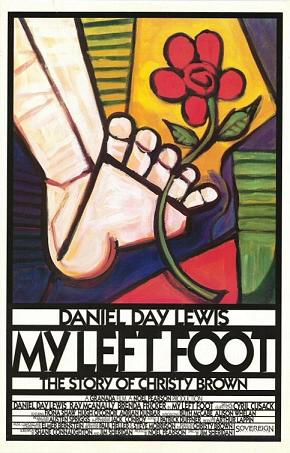
Fun Fact Friday presents: Daniel Day-Lewis, «My Left Foot», And A Trailblazing Marketing Campaign
This week’s Fun Fact:
While Daniel Day-Lewis may be more recently known for his Academy Award-winning roles in Steven Spielberg’s Lincoln (2012) and Paul Thomas Anderson’s There Will Be Blood, (2007) his first Academy Award was earned with his performance in Jim Sheridan’s My Left Foot: The Story of Christy Brown (1989). Day-Lewis portrayed Brown (a writer and artist with cerebral palsy) as an adult. One intriguing aspect of this film is how it was marketed for people with disabilities. For instance, EIN SOF Communications, Inc. employed a “direct mail campaign” that focused on releasing material that encouraged people to see the film. This included “reviews by Disability Studies scholars” and “a ton of feature stories that brought the film vastly more media attention than it would have otherwise received” (Riley II 78). EIN SOF was also able to persuade Miramax to “[pull] the film from exhibitors if their theatre was not wheelchair accessible,” after hearing from disability rights groups following their examination of local venues (“Miramax”). Today, EIN SOF is described as a “leading disability strategic marketing, accessible events and employment strategies woman-owned small business” (“Team”).
– Jonathan Bartholomy, RAFF Chicago Planning Committee Member
RAFF Chicago runs from October 4-8, 2017. Follow us on Twitter and Facebook!!!
If you would like to get involved with RAFF Chicago please contact us at (773) 203-5039 or email Matt Lauterbach at [email protected]
Works Cited
«Miramax – My Left Foot.» einsofcommunications, www.einsofcommunications.com/success-stories/miramax-left-foot/. Accessed 21 June 2017.
Riley II, Charles A. Disability and Business: Best Practices and Strategies For Inclusion.
Hanover: University Press of New England, 2006.
“Team.” einsofcommunications, www. http://einsofcommunications.com/about/team/.
Accessed 21 June 2017.
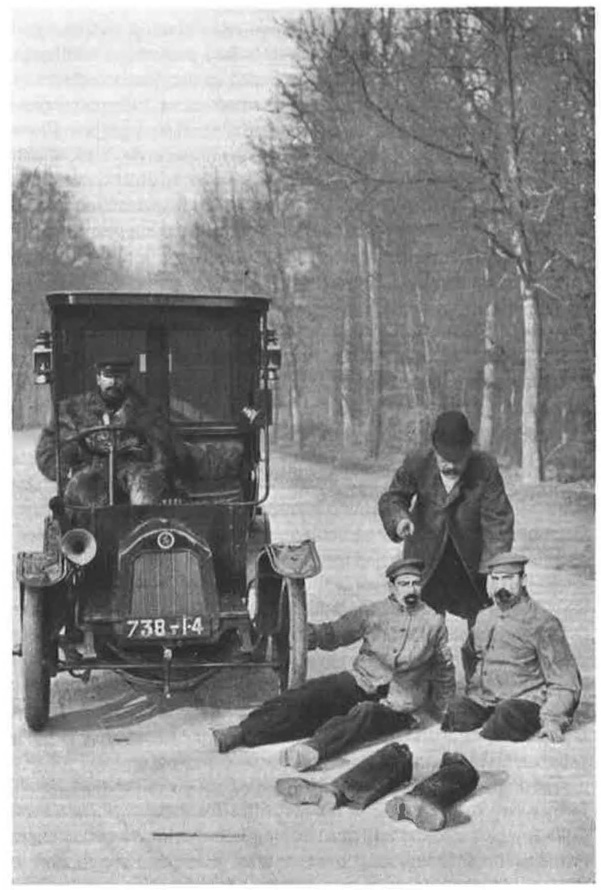
Fun Fact Friday presents: Early French Filmmaking And The «Shock» Effect
This week’s Fun Fact:
During the early days of film, French film companies such as Pathé and Gaumont used disabled performers for “the ‘shock’ effect of their appearance,” employing them for trick effects in comedies and other types of films (Norden 23). In the one-reel comedy The Automobile Accident, (1904) a drunk man coming home from work decides to lay down in the middle of the road and go to sleep. While he is sleeping, a taxi cab speedily comes down the road and runs over him, severing his legs from the rest of his body. The sleeping man awakens, surprised by the loss of his legs. The chauffeur of the taxi cab is terrified, but the country doctor in the back of the taxi cab is not affected as much, leaving the vehicle, picking up the severed limbs, reattaching them to the man, and helping him to his feet before they shake hands. Now with his legs back in place, the man “[resumes] his journey as if nothing had happened” (Talbot 211-212). In order to achieve such a visual effect, footage of a disabled actor was edited into the film to produce a fluid sequence (Norden 23; Talbot 212-214). Such an example illustrates the limited opportunities that were available to performers with disabilities and how disability was used in film at that time.
– Jonathan Bartholomy, RAFF Chicago Planning Committee Member
RAFF Chicago runs from October 4-8, 2017. Follow us on Twitter and Facebook!!!
If you would like to get involved with RAFF Chicago please contact us at (773) 203-5039 or email Matt Lauterbach at [email protected]
Works Cited
Norden, Martin F. The Cinema of Isolation: A History of Physical Disability in the Movies.
New Jersey: Rutgers University Press, 1994.
Talbot, Frederick A. Moving Pictures: How They Are Made and Worked. Philadelphia:
- B. Lippincott Company, 1914.

Fun Fact Friday presents: A Film Review of «Finding Dory» by Abbie Volkmann
Disability in Disney Part 2
I believe it’s important for individuals with disabilities to be represented in the media, especially in films, and a few months ago, I wrote about how Disney portrays individuals with disabilities in a positive light through films like Finding Nemo (2003). Last month, I saw the sequel to this highly acclaimed film, Finding Dory (2016). Here are some thoughts I have after seeing the film as well as my opinion on its depiction of individuals with disabilities.
The storyline is similar to the first film, but this time, as the title suggests, Dory is the protagonist. Throughout the film we follow our favorite forgetful blue tang as she, along with her friend Marlin and his son Nemo, goes on a journey to find her parents, from whom she had become separated at a young age. As with the first film, the trio encounter many adventures and surprises along the way.
There were many aspects of the film I liked, but one in particular that stood out to me was the inclusion of characters with disabilities. Much like the first film, many characters in Finding Dory have some kind of disability. What sets this film apart from its predecessor, however, is the representations themselves. Unlike the first film, where the characters’ disabilities seemed to be a minor issue that was oftentimes  either shrugged off and pretty much ignored (with the exception of Dory and Nemo) or were used for comedic purposes, in the sequel, disability plays a bigger and more serious role. The characters aid each other in overcoming their disabilities, and even use each other’s strengths to help those that struggle in the same area. For instance, one of the characters, Destiny, is a whale shark who is visually impaired. This impacts her ability to navigate through her surroundings. During a scene that is very significant to the plot of the film, she is assisted by her neighbor, a beluga named Bailey. During this scene, both animals are trying to locate Dory so they can help her. Because Destiny has trouble
either shrugged off and pretty much ignored (with the exception of Dory and Nemo) or were used for comedic purposes, in the sequel, disability plays a bigger and more serious role. The characters aid each other in overcoming their disabilities, and even use each other’s strengths to help those that struggle in the same area. For instance, one of the characters, Destiny, is a whale shark who is visually impaired. This impacts her ability to navigate through her surroundings. During a scene that is very significant to the plot of the film, she is assisted by her neighbor, a beluga named Bailey. During this scene, both animals are trying to locate Dory so they can help her. Because Destiny has trouble
with her orientation, Bailey helps her navigate using his echolocation skills, which he himself was previously struggling with until he learned how to improve the skills. This is just one of the many examples of how characters in the film with disabilities assist each other.
As with most sequels, there were a few flaws and inconsistencies that bothered me. O ne huge issue I had with this film is the character of Marlin, Nemo’s father. Throughout Finding Nemo, he learns to be more accepting of and patient with others who are different as well as to be more relaxed and less high-strung in general. In Finding Dory, however, he seems to have returned to his former self, and needs constant reminders from his son that he should trust Dory more and be more accepting of her.
ne huge issue I had with this film is the character of Marlin, Nemo’s father. Throughout Finding Nemo, he learns to be more accepting of and patient with others who are different as well as to be more relaxed and less high-strung in general. In Finding Dory, however, he seems to have returned to his former self, and needs constant reminders from his son that he should trust Dory more and be more accepting of her.
Overall, I enjoyed Finding Dory very much, but it wasn’t as good as Finding Nemo. The portrayal of disability within this film was fantastic, even better than the first one. I would definitely recommend seeing this film, whether you’ve been a Finding Nemo fan since it first came out, or you’re just curious about its portrayal of disability.
– Abbie is a recent graduate of Loras College with a degree in Media Studies and has recently become a Digital Marketing Intern at JJsList.com
RAFF Chicago runs from October 4-8, 2017. Follow us on Twitter and Facebook!!!
If you would like to get involved with RAFF Chicago please contact us at (773) 203-5039 or email Matt Lauterbach at [email protected]

Fun Fact Friday presents: Disability Through The Lens of Disney
For one of my senior research projects in college, I researched the representation of people with disabilities in Disney movies, as well as how they are portrayed. As I describe in my paper, Disney has created very few characters with disabilities so far, and the ones that have been portrayed are not entirely accurate.
They also do not go beyond the typical “You can do anything no matter what” statement, and sometimes portray characters with disabilities as comical and less realistic.
 However, Disney has produced two films in particular that portray disabilities in a positive and somewhat realistic way, which are Dumbo (1941) and Finding Nemo (2003). The latter film does a better job of portraying disabilities than the former, mostly due to the time periods in which the films were released. In the 1940s, when Dumbo was released, people didn’t know as much about disabilities than they do in today’s society.
However, Disney has produced two films in particular that portray disabilities in a positive and somewhat realistic way, which are Dumbo (1941) and Finding Nemo (2003). The latter film does a better job of portraying disabilities than the former, mostly due to the time periods in which the films were released. In the 1940s, when Dumbo was released, people didn’t know as much about disabilities than they do in today’s society.
Our increasing knowledge and awareness of individuals with disabilities, as well as the disabilities themselves, has led us to be more accepting of them. This is very similar to what we do in our Disability Awareness Trainings!
 These differences in views of disabilities can be seen at the end of each film. At the end of Dumbo, although the titular character becomes more accepted by others, his disability is still viewed as a “spectacle,” and that is what eventually leads to his fame. On the other hand, at the end of Finding Nemo, the titular fish does not become famous for his disability, rather, he simply is accepted into society for who he is.
These differences in views of disabilities can be seen at the end of each film. At the end of Dumbo, although the titular character becomes more accepted by others, his disability is still viewed as a “spectacle,” and that is what eventually leads to his fame. On the other hand, at the end of Finding Nemo, the titular fish does not become famous for his disability, rather, he simply is accepted into society for who he is.
In Finding Nemo, Nemo is accepted earlier in the film than Dumbo is and he is accepted by more individuals, not to mention others his own age. The other kids even have disabilities of their own and they proudly share their differences with Nemo, thereby allowing him to fit in more.
His acceptance is further established later in the film, when he meets a group of fish in a fish tank. Each fish has a disability of their own as well, and Nemo can identify with them because of this. Finding Nemo is perhaps the closest Disney has come so far to not only accurately portraying individuals with disabilities, but creating characters individuals with disabilities can relate to.
 Besides Nemo, there is one other character with a disability that plays an important part in the storyline and that is Dory, who has a disability that affects her short term memory.
Besides Nemo, there is one other character with a disability that plays an important part in the storyline and that is Dory, who has a disability that affects her short term memory.
Despite her frustrations with this, she always has a positive outlook on life, and is very determined to help those in need. These are both traits in which the audience can be inspired by as well as relate to.
Later this month, Dory’s story will be continued and expanded in the upcoming film Finding Dory (2016). Let’s hope Disney and Pixar will continue to portray Dory in a positive light and maybe even explore some characteristics of her that we have yet to discover. We’re looking forward to seeing what Pixar can come up with.
– Abbie is a recent graduate of Loras College with a degree in Media Studies and has recently become a Digital Marketing Intern at JJsList.com
RAFF Chicago runs from October 4-8, 2017. Follow us on Twitter and Facebook!!!
If you would like to get involved with RAFF Chicago please contact us at (773) 203-5039 or email Matt Lauterbach at [email protected]

Fun Fact Friday presents: «Children Of A Lesser God»

Fact:
Randa Haines’ Children of a Lesser God (1986) introduced Marlee Matlin to the world. The film is seen as extremely important as well, having a deaf individual in the lead role (Matlin) using American Sign Language (ASL) throughout the film and showing a community of deaf people interacting with each other (Through). At the same time, the deaf community considers the film problematic. The lighting and framing of the film causes some of the ASL to be obscured, making it hard for deaf audience members to understand the «signed dialogue» (Schuchman 85). Furthermore, hearing characters do not always sign when they talk (Norden 288). There was also the problem of movie theaters lacking versions of the film with subtitles, as only ten of the 215 theaters showing the film in late 1986 “had captioned versions, often [showing the film] only on early Saturday and Sunday mornings” (288). This illustrates the accessibility issues that existed at the time pertaining to this film. As a result of these factors, the deaf community also regards this film as being geared toward a hearing audience (289).
– Jonathan Bartholomy, RAFF Chicago Planning Committee Member
RAFF Chicago runs from October 4-8, 2017. Follow us on Twitter and Facebook!!!
If you would like to get involved with RAFF Chicago please contact us at (773) 203-5039 or email Matt Lauterbach at [email protected]
Works Cited
Norden, Martin F. The Cinema of Isolation: A History of Physical Disability in the Movies.
New Jersey: Rutgers University Press, 1994.
Schuchman, John S. Hollywood Speaks: Deafness and the Film Entertainment Industry. Urbana:
University of Illinois Press, 1988.
Through Deaf Eyes. Dir. Diane Garey and Lawrence R. Hott. Perf. Marlee Matlin and CJ Jones.
DVD. PBS Home Video, 2007.


